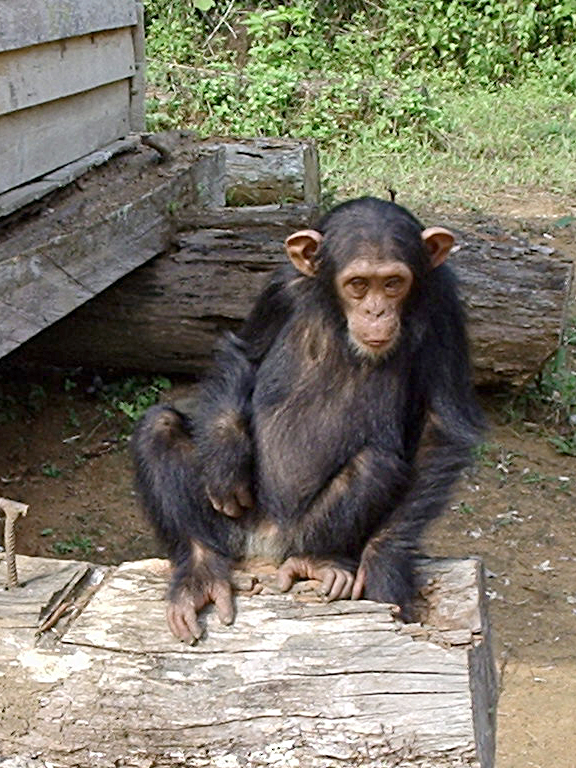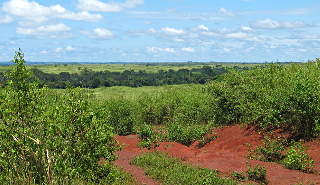|
Bulu Language
Bulu is a Bantu language of the Bulu people of Cameroon. The language had 174,000 native speakers in 1982, with some 800,000 second language speakers in 1991. Its dialects include Bene, Yelinda, Yembana, Yengono, and Zaman. Bulu was formerly used by colonial and missionary groups as a '' lingua franca'' in the region for commercial, educational, and religious purposes, though it is today becoming less frequent in those spheres. Bulu belongs to the group of Beti languages and is intelligible with Eton, Ewondo, and Fang. Distribution Bulu speakers are concentrated primarily in Cameroon's South Province, with the largest number at Ebolowa and Sangmélima. Some speakers live in the Nyong-et-Mfoumou division of the Centre and the Haut-Nyong division of the East. According to ALCAM (2012), Bulu is spoken in the departments of Mvila and Dja-et-Lobo (Southern Region), and also the south of the department of Haute-Sanaga (Central Region) where the Yezum dialect of Ewondo is al ... [...More Info...] [...Related Items...] OR: [Wikipedia] [Google] [Baidu] |
Bulu People
The Beti-Pahuin are a Bantu people, Bantu ethnic group located in rain forest regions of Cameroon, Republic of the Congo, Equatorial Guinea, Gabon, and São Tomé and Príncipe. Though they separate themselves into several individual clans, they all share a common origin, history and culture Estimated to be well over 8 million individuals in the early 21st century, they form the largest ethnic group in central Cameroon and its capital city of Yaoundé, in Gabon, and in Equatorial Guinea. Their Beti language, Beti languages are Mutual intelligibility, mutually intelligible. Group distinctions The Beti-Pahuin are made up of over 20 individual clans. Altogether, they inhabit a territory of forests and rolling hills that stretches from the Sanaga River in the north to Equatorial Guinea and the northern halves of Gabon to Congo to the south, and from the Atlantic Ocean to the west to the Dja River in the east. Beti The first grouping, called the Beti, consists of the Ewondo (more pr ... [...More Info...] [...Related Items...] OR: [Wikipedia] [Google] [Baidu] |
South Province (Cameroon)
The South Region (french: Région du Sud) is located in the southwestern and south-central portion of the Republic of Cameroon. It is bordered to the east by the East Region, to the north by the Centre Region, to the northwest by the Littoral Region, to the west by the Gulf of Guinea (part of the Atlantic Ocean), and to the south by the countries of Equatorial Guinea, Gabon, and Congo. The South occupies 47,720 km2 of territory, making it the fourth largest region in the nation. The major ethnic groups are the various Beti-Pahuin peoples, such as thEwondo Fang, anBulu The South Region has a fair amount of industry, its main commerce consisting of logging, timber, mining, and offshore oil drilling. Commercial agriculture is also important in the South, the major cash crops being cocoa and rubber. Cattle rearing and fishing are significant economic components, as well. Much of the population is made up of subsistence farmers. 2008 presidential decree abolishes province ... [...More Info...] [...Related Items...] OR: [Wikipedia] [Google] [Baidu] |
Labial Consonant
Labial consonants are consonants in which one or both lips are the active articulator. The two common labial articulations are bilabials, articulated using both lips, and labiodentals, articulated with the lower lip against the upper teeth, both of which are present in English. A third labial articulation is dentolabials, articulated with the upper lip against the lower teeth (the reverse of labiodental), normally only found in pathological speech. Generally precluded are linguolabials, in which the tip of the tongue contacts the posterior side of the upper lip, making them coronals, though sometimes, they behave as labial consonants. The most common distribution between bilabials and labiodentals is the English one, in which the nasal and the stops, , , and , are bilabial and the fricatives, , and , are labiodental. The voiceless bilabial fricative, voiced bilabial fricative, and the bilabial approximant do not exist as the primary realizations of any sounds in English, bu ... [...More Info...] [...Related Items...] OR: [Wikipedia] [Google] [Baidu] |
Nguelemendouka
Nguelemendouka is a town and commune in Cameroon. See also *Communes of Cameroon The Arrondissements of Cameroon are the third-level units of administration in Cameroon. The arrondissements are organised by divisions and sub divisions of each province (now Regions). As of 2005 (and since 1996) there are 2 urban commu ... References Site de la primature - Élections municipales 2002 Contrôle de gestion et performance des services publics communaux des villes camerounaises Thèse de Donation Avele, Université Montesquieu Bordeaux IV * Charles Nanga, La réforme de l’administration territoriale au Cameroun à la lumière de la loi constitutionnelle n° 96/06 du 18 janvier 1996', Mémoire ENA. Populated places in East Region (Cameroon) Communes of Cameroon {{Cameroon-geo-stub ... [...More Info...] [...Related Items...] OR: [Wikipedia] [Google] [Baidu] |
Haut-Nyong
Haut-Nyong is a department of East Province in Cameroon. The department covers an area of 36,384 km and as of 2001 had a total population of 216,768. The capital of the department lies at Abong-Mbang. Subdivisions The department is divided administratively into 14 communes and in turn into villages. Communes * Abong-Mbang * Angossas * Atok * Dimako * Doumaintang * Doumé * Lomié * Mboma * Messamena * Messok * Mindourou * Ngoyla * Nguelemendouka Nguelemendouka is a town and commune in Cameroon. See also *Communes of Cameroon The Arrondissements of Cameroon are the third-level units of administration in Cameroon. The arrondissements are organised by divisions and sub divisions of eac ... * Somalomo References Departments of Cameroon East Region (Cameroon) {{Cameroon-geo-stub ... [...More Info...] [...Related Items...] OR: [Wikipedia] [Google] [Baidu] |
Nyong-et-Mfoumou
Nyong-et-Mfoumou is a department of Centre Province in Cameroon. The department covers an area of 6,172 km and as of 2001 had a total population of 130,321. The capital of the department lies at Akonolinga. Subdivisions The department is divided administratively into five communes and in turn into villages. Communes * Akonolinga * Ayos Ayos is a town and commune in the department of Nyong-et-Mfoumou Centre region of Cameroon. The district is noted for its place in the history of medicine: the 1920s saw the establishment of a medical center managed by the French doctor Eugè ... * Endom * Kobdombo * Mengang References Departments of Cameroon Centre Region (Cameroon) {{CentreRegionCM-geo-stub ... [...More Info...] [...Related Items...] OR: [Wikipedia] [Google] [Baidu] |
Haute-Sanaga
Haute-Sanaga is a department of Central Region in Cameroon. The department covers an area of 11,854 km and as of 2001 had a total population of 115,305. The capital of the department lies at Nanga-Eboko. Subdivisions The department is divided administratively into seven communes An intentional community is a voluntary residential community which is designed to have a high degree of social cohesion and teamwork from the start. The members of an intentional community typically hold a common social, political, relig ... and in turn into villages. Communes * Bibey * Lembe-Yezoum * Mbandjock * Minta * Nanga-Eboko * Nkoteng * Nsem References Departments of Cameroon Centre Region (Cameroon) {{CentreRegionCM-geo-stub ... [...More Info...] [...Related Items...] OR: [Wikipedia] [Google] [Baidu] |
Dja-et-Lobo
Dja-et-Lobo is a department of South Province in Cameroon. The department covers an area of 19,911 km and as of 2005 had a total population of 196,951. The capital of the department lies at Sangmélima. Subdivisions The department is divided administratively into 9 communes and in turn into villages. Communes # Bengbis # Djoum # Meyomessala # Meyomessi # Mintom # Oveng # Sangmélima (urban) # Sangmélima (rural) # Zoétélé See also *Communes of Cameroon The Arrondissements of Cameroon are the third-level units of administration in Cameroon. The arrondissements are organised by divisions and sub divisions of each province (now Regions). As of 2005 (and since 1996) there are 2 urban commu ... References Departments of Cameroon South Region (Cameroon) {{Cameroon-geo-stub ... [...More Info...] [...Related Items...] OR: [Wikipedia] [Google] [Baidu] |
Mvila
Mvila is a department of South Province in Cameroon. The department covers an area of 8697 km and as of 2005 had a total population of 179,429. The capital of the department lies at Ebolowa. Subdivisions The department is divided administratively into 8 communes and in turn into villages. Communes * Biwong-Bane * Biwong-Bulu * Ebolowa (urban) * Ebolowa (rural) * Efoulan * Mengong * Mvangane * Ngoulemakong Ngoulemakong is a town and commune in Cameroon, located in the Department of Mvila, in the South Region. It was created in 1955. See also *Communes of Cameroon The Arrondissements of Cameroon are the third-level units of administration in Ca ... References Departments of Cameroon South Region (Cameroon) {{Cameroon-geo-stub ... [...More Info...] [...Related Items...] OR: [Wikipedia] [Google] [Baidu] |
East Province (Cameroon)
The East Region (french: Région de l'Est) occupies the southeastern portion of the Republic of Cameroon. It is bordered to the east by the Central African Republic, to the south by Congo, to the north by the Adamawa Region, and to the west by the Centre and South Regions. With 109,002 km2 of territory, it is the largest region in the nation as well as the most sparsely populated. Historically, the peoples of the East have been settled in Cameroonian territory for longer than any other of the country's many ethnic groups, the first inhabitants being the Baka (or Babinga) pygmies. The East Region has very little industry, its main commerce consisting of logging, timber, and mining. Instead, the bulk of its inhabitants are subsistence farmers. The region is thus of little political import and is often ignored by Cameroonian politicians. This coupled with the low level of development in the province have led to its being dubbed "the forgotten province". The southwest region ... [...More Info...] [...Related Items...] OR: [Wikipedia] [Google] [Baidu] |
Haut-Nyong Division
Haut-Nyong is a department of East Province in Cameroon. The department covers an area of 36,384 km and as of 2001 had a total population of 216,768. The capital of the department lies at Abong-Mbang. Subdivisions The department is divided administratively into 14 communes and in turn into villages. Communes * Abong-Mbang * Angossas * Atok * Dimako * Doumaintang * Doumé * Lomié * Mboma * Messamena * Messok * Mindourou * Ngoyla * Nguelemendouka Nguelemendouka is a town and commune in Cameroon. See also *Communes of Cameroon The Arrondissements of Cameroon are the third-level units of administration in Cameroon. The arrondissements are organised by divisions and sub divisions of eac ... * Somalomo References Departments of Cameroon East Region (Cameroon) {{Cameroon-geo-stub ... [...More Info...] [...Related Items...] OR: [Wikipedia] [Google] [Baidu] |
Centre Province (Cameroon)
The Centre Region (french: région du Centre) occupies 69,000 km2 of the central plains of the Republic of Cameroon. It is bordered to the north by the Adamawa Region, to the south by the South Region, to the east by the East Region, and to the West by the Littoral and West Regions. It is the second largest (after East Region) of Cameroon's regions in land area. Major ethnic groups include the Bassa, Ewondo, and Vute. Yaoundé, capital of Cameroon, is at the heart of the Centre, drawing people from the rest of the country to live and work there. The Centre's towns are also important industrial centres, especially for timber. Agriculture is another important economic factor, especially with regard to the province's most important cash crop, cocoa. Outside of the capital and the plantation zones, most inhabitants are sustenance farmers. 2008 presidential decree abolishes provinces In 2008, the President of the Republic of Cameroon, President Paul Biya signed decrees ab ... [...More Info...] [...Related Items...] OR: [Wikipedia] [Google] [Baidu] |
.jpg)

